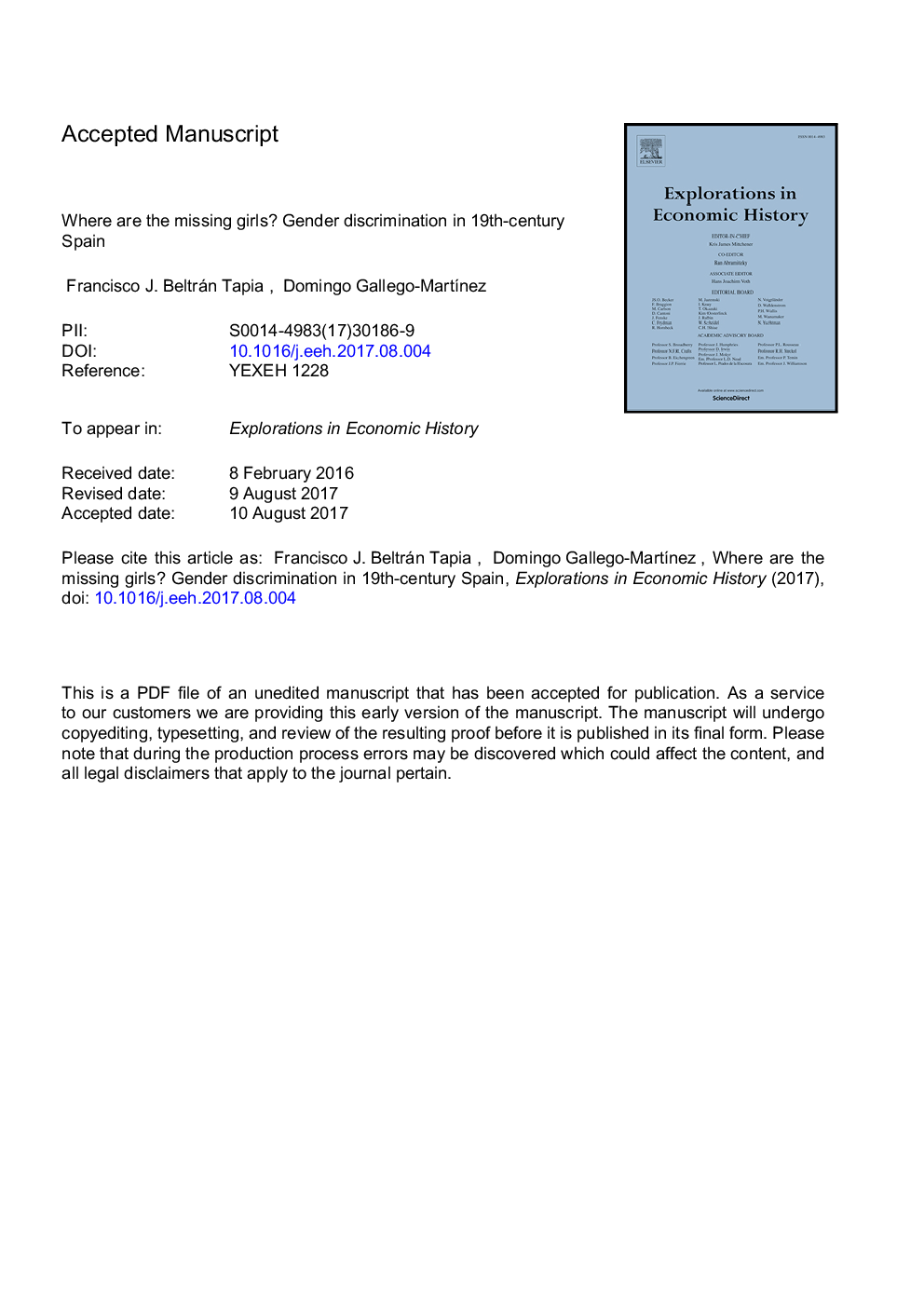| Article ID | Journal | Published Year | Pages | File Type |
|---|---|---|---|---|
| 7351955 | Explorations in Economic History | 2017 | 25 Pages |
Abstract
This article shows that average (male-to-female) infant and child sex ratios were abnormally high in late 18th- and 19th-century Spain, thus pointing to some sort of unexplained excess female mortality early in life. This pattern, which is also shared by other countries in Southern Europe, disappeared at the turn of the 20th century. Rather than female infanticide or other type of extreme violence against girls, these results might be explained by gender discrimination in terms of an unequal allocation of food, care and/or workload within the household. In high-mortality environments, this type of discrimination easily resulted in higher female mortality rates.
Related Topics
Social Sciences and Humanities
Arts and Humanities
History
Authors
Francisco J. Beltrán Tapia, Domingo Gallego-MartÃnez,
